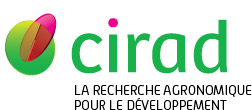Arias Monica, Behrendt Lis, Dreßler Lyn, Raka Adelina, Perrier Charles, Elias Marianne, Gomez Doris, Renoult Julien P., Tedore Cynthia. 2024. Testing the equivalency of human “predators” and deep neural networks in the detection of cryptic moths. Journal of Evolutionary Biology:voae146, 11 p.
|
Version Online first
- Anglais
Accès réservé aux personnels Cirad Utilisation soumise à autorisation de l'auteur ou du Cirad. 611799.pdf Télécharger (1MB) | Demander une copie |
Url - jeu de données - Entrepôt autre : https://doi.org/10.5061/dryad.w0vt4b92k
Liste HCERES des revues (en SHS) : oui
Thème(s) HCERES des revues (en SHS) : Psychologie-éthologie-ergonomie
Résumé : Researchers have shown growing interest in using deep neural networks (DNNs) to efficiently test the effects of perceptual processes on the evolution of colour patterns and morphologies. Whether this is a valid approach remains unclear, as it is unknown whether the relative detect- ability of ecologically relevant stimuli to DNNs actually matches that of biological neural networks. To test this, we compare image classification performance by humans and 6 DNNs (AlexNet, VGG-16, VGG-19, ResNet-18, SqueezeNet, and GoogLeNet) trained to detect artificial moths on tree trunks. Moths varied in their degree of crypsis, conferred by different sizes and spatial configurations of transparent wing elements. Like humans, four of six DNN architectures found moths with larger transparent elements harder to detect. However, humans and only one DNN architecture (GoogLeNet) found moths with transparent elements touching one side of the moth's outline harder to detect than moths with untouched outlines. When moths took up a smaller proportion of the image (i.e., were viewed from further away), the camouflaging effect of transparent elements touching the moth's outline was reduced for DNNs but enhanced for humans. Viewing distance can thus interact with camouflage type in opposing directions in humans and DNNs, which warrants a deeper investigation of viewing distance/size interactions with a broader range of stimuli. Overall, our results suggest that human and DNN responses had some similarities, but not enough to justify wide- spread use of DNNs for studies of camouflage.
Mots-clés Agrovoc : camouflage, réseau de neurones, genre humain, intelligence artificielle
Mots-clés libres : Deep learning, Human observers, Artificial prey, Background matching, Disruptive coloration, Transparency
Agences de financement hors UE : Agence Nationale de la Recherche, Human Frontier Science Program
Projets sur financement : (FRA) La transparence : origine physique, fonctions adaptatives et évolution chez les papillons transparents, (FRA) Transparency, (FRA) Mediterranean Center for Environment and Biodiversity
Auteurs et affiliations
-
Arias Monica, CIRAD-BIOS-UMR PHIM (CRI)
 ORCID: 0000-0003-1331-2604
ORCID: 0000-0003-1331-2604
- Behrendt Lis, Universität Hamburg (DEU)
- Dreßler Lyn, Universität Hamburg (DEU)
- Raka Adelina, Universität Hamburg (DEU)
- Perrier Charles, INRAE (FRA)
- Elias Marianne, CNRS (FRA)
- Gomez Doris, CNRS (FRA)
- Renoult Julien P., CNRS (FRA)
- Tedore Cynthia, Universität Hamburg (DEU) - auteur correspondant
Source : Cirad-Agritrop (https://agritrop.cirad.fr/611799/)
[ Page générée et mise en cache le 2025-01-27 ]




